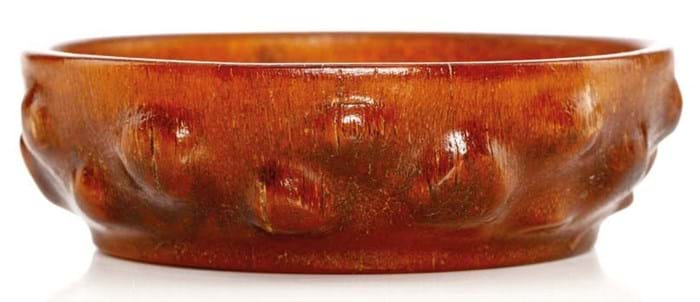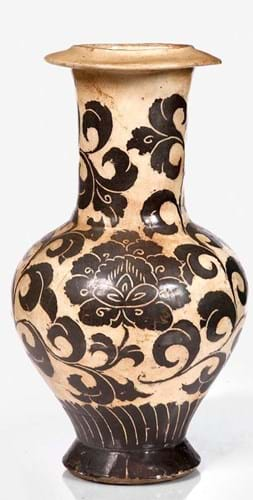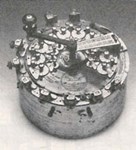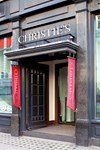Lyon & Turnbull

Detail of a set of 48 imperial inksticks contained in two fine gilt-lacquered ‘dragon’ boxes sold at £155,000 at Lyon & Turnbull.
Lyon & Turnbull’s sale at the Hellenic Centre in Marylebone on May 9 struggled – only 144 of 460 lots got away – but the catalogue included one of the most-contested lots of the series.
Estimated at £2000-3000 but sold at £155,000 was a set of 48 imperial inksticks contained in two fine gilt-lacquered ‘dragon’ boxes.
Together they illustrate stages of cotton cultivation and manufacturing in imperial China, each 3 x 1in (7 x 2.5cm) stick delicately carved on the one side, and inscribed with a poem by Qianlong on the reverse.
One of the inksticks is inscribed with a ‘table of contents’ while another with an introductory essay is signed ‘carved by Wang Weigao, supervisor of ink-making in the Imperial Library’.
The set, from a private Scottish collection, had been acquired in Edinburgh in the 1980s.
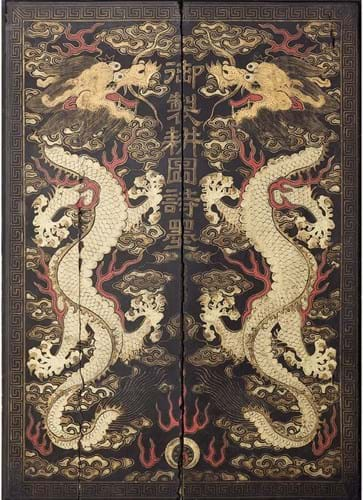
A set of 48 imperial inksticks contained in two fine gilt-lacquered ‘dragon’ boxes sold at £155,000 at Lyon & Turnbull.
Chiswick Auctions
This rhinoceros horn saucer dish, just 3½in (9cm) across, dates from the 17th century and is carved in simulation of the bark of a tree. A similarly decorated cup is reproduced in Chapman’s The Art of Rhinoceros Horn Carving in China (1999). It was among the highlights of the Asian art sale at Chiswick Auctions in west London, selling at £15,000.
While the rules on the sale of rhinoceros horn works of art have been relaxed a little in recent years, it remains a no-go area for both Sotheby’s and Christie’s. With the London market for rhino horn left largely to themselves, Bonhams offered 19 rhino horn libation cups in a single sale.
Sworders
Leading the Sworders sale in Stansted Mountfitchet on May 9 at £52,000 (estimate £1000-1500) was this gilt-decorated powder blue bottle vase with an iron red seal mark for the emperor Jiaqing (1796-1820). Although of the period, the 10in (26cm) high vase was far from perfect, with a large chip and crack to the rim.
Mallams
Tsu-chou brown stonewares made principally in the provinces of northern China between the Sung and Ming dynasties (960-1644), have often been described as Japanese tatse.
A Japanese buyer was at Mallams in Cheltenham on April 26 just to acquire this typical bottle vase at £32,000. From a Gloucestershire estate, it was not in the best condition and carried a pre-sale estimate of just £200-300.
Woolley & Wallis
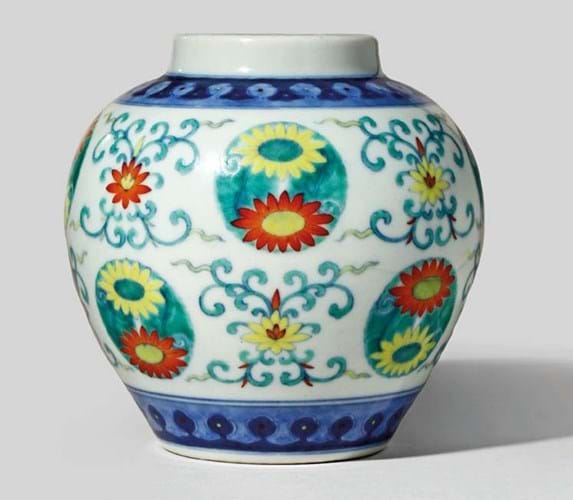
‘Chrysanthemum’ jar with a six-character Qianlong seal mark catalogued as ‘probably Guangxi (1871-1908)’ sold for £39,000 at Woolley & Wallis.
There are always those prepared to back their judgment that a vessel with an ‘honorific’ mark might just be of the period. The sale at Woolley & Wallis provided two cases in point.
This 4½in (11cm) ‘chrysanthemum’ jar with a six-character Qianlong seal mark catalogued as ‘probably Guangxi (1871-1908)’ sold to a London dealer for £39,000 (estimate £1000-2000).
A pair of ‘Republican period’ famille rose bowls enamelled with branches of bitter melons, bamboo and butterflies took £35,000 (estimate £1000-2000).
Dreweatts

This quatrefoil vessel with mask and ring handles took £75,000 at Dreweatts.
Dreweatts’ sale in Donnington Priory on May 16 was dominated by the unexpected performance of two gilt bronze-covered vases. Both carried Qianlong character marks and were catalogued as coming from an English private collection where they had been since before 1970.
Not everyone was convinced they were 18th century. However, against hopes of a few hundred pounds, this quatrefoil vessel with mask and ring handles took £75,000. A similar tapering cylindrical vase with a pierced dragon cover took £67,000.


